
Tarragona: A Journey Through Time on the Mediterranean Coast
Experience Tarragona: A Mediterranean gem filled with Roman history, medieval charm, sunny beaches, and vibrant festivals on Spain's Costa Daurada.
Tarragona, perched on Spain's stunning Costa Daurada, is a city where history and the sea converge. As you wander through its ancient streets, you'll feel the echoes of Roman legions and medieval knights. This UNESCO World Heritage Site is famed for its well-preserved Roman ruins, including the impressive amphitheater overlooking the Mediterranean and the ancient city walls that have stood the test of time. The city's old quarter, or 'Part Alta,' invites you to lose yourself in its narrow, winding streets. Here, you'll discover the grand Tarragona Cathedral, a stunning blend of Romanesque and Gothic architecture that has watched over the city for centuries. The nearby Plaça del Rei is home to the National Archaeological Museum, where you can delve deeper into the city's storied past. Beyond its historical treasures, Tarragona offers a vibrant seaside experience. The golden sands of Playa del Miracle and Playa Larga are perfect for basking in the sun or enjoying a refreshing dip in the azure waters of the Mediterranean. The city's bustling Rambla Nova is lined with shops, cafes, and restaurants, providing a delightful blend of culture and leisure. Tarragona is also known for its lively festivals. The Santa Tecla Festival in September is a highlight, featuring parades, fireworks, and traditional human tower building. Food lovers will relish the local cuisine, with dishes such as 'calçots' (grilled spring onions) and 'romesco' sauce, as well as fresh seafood straight from the Mediterranean.
Local tips in Tarragona
- Visit the Roman amphitheater early in the morning to avoid crowds and enjoy a peaceful view of the Mediterranean.
- Try the local 'calçots' and 'romesco' sauce at a traditional restaurant for a true taste of Tarragona.
- Explore the Part Alta in the late afternoon when the streets are less crowded and the lighting is perfect for photos.
- Check the festival calendar before your visit to experience the lively Santa Tecla Festival or other local events.
- Walk along the Balcón del Mediterráneo for stunning panoramic views of the coastline.
Tarragona: A Journey Through Time on the Mediterranean Coast
Tarragona, perched on Spain's stunning Costa Daurada, is a city where history and the sea converge. As you wander through its ancient streets, you'll feel the echoes of Roman legions and medieval knights. This UNESCO World Heritage Site is famed for its well-preserved Roman ruins, including the impressive amphitheater overlooking the Mediterranean and the ancient city walls that have stood the test of time. The city's old quarter, or 'Part Alta,' invites you to lose yourself in its narrow, winding streets. Here, you'll discover the grand Tarragona Cathedral, a stunning blend of Romanesque and Gothic architecture that has watched over the city for centuries. The nearby Plaça del Rei is home to the National Archaeological Museum, where you can delve deeper into the city's storied past. Beyond its historical treasures, Tarragona offers a vibrant seaside experience. The golden sands of Playa del Miracle and Playa Larga are perfect for basking in the sun or enjoying a refreshing dip in the azure waters of the Mediterranean. The city's bustling Rambla Nova is lined with shops, cafes, and restaurants, providing a delightful blend of culture and leisure. Tarragona is also known for its lively festivals. The Santa Tecla Festival in September is a highlight, featuring parades, fireworks, and traditional human tower building. Food lovers will relish the local cuisine, with dishes such as 'calçots' (grilled spring onions) and 'romesco' sauce, as well as fresh seafood straight from the Mediterranean.
When is the best time to go to Tarragona?
Iconic landmarks you can’t miss
Mediterranean Balcony
Experience breathtaking views of the Mediterranean Sea at Tarragona's Mediterranean Balcony, a stunning observation deck that captures the essence of coastal beauty.

Amfiteatre de Tarragona
Explore the Amfiteatre de Tarragona, a stunning Roman amphitheatre by the Mediterranean that offers a glimpse into ancient history and architectural marvel.

Circ Romà
Discover the ancient wonders of Circ Romà, a historical landmark in Tarragona that once hosted thrilling Roman chariot races.

The Ferreres Aqueduct
Explore the stunning Ferreres Aqueduct in Tarragona, a UNESCO World Heritage site, and marvel at its impressive Roman architecture amidst beautiful surroundings.

Monument to the Castellers
Discover the Monument to the Castellers in Tarragona, a stunning sculpture celebrating the unique Catalan tradition of human tower-building.

Colonial forum of Tàrraco
Explore the Colonial Forum of Tàrraco, a historical landmark in Tarragona that brings Roman history to life with captivating ruins and rich cultural heritage.

Roman theatre of Tàrraco
Discover the majesty of the Roman Theatre of Tàrraco, a UNESCO World Heritage site showcasing the grandeur of ancient Roman architecture.

Font del Centenari
Discover the artistic elegance of Font del Centenari, a stunning sculpture in Tarragona that embodies the city's rich heritage and cultural significance.

Parc de la Ciutat
Immerse yourself in nature at Parc de la Ciutat, Tarragona's serene urban park featuring lush gardens, scenic paths, and family-friendly facilities.

St. Anthony Gate
Discover the historic St. Anthony Gate in Tarragona, a stunning landmark showcasing baroque architecture and a gateway to the city's vibrant past.
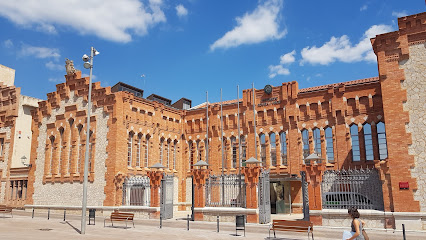
National Archaeological Museum of Tarragona
Explore Tarragona's rich Roman heritage at the National Archaeological Museum, a cultural gem showcasing ancient artifacts and engaging exhibitions.

Muralla Romana de Tarragona
Discover the rich history of Tarragona at the Muralla Romana, a stunning UNESCO World Heritage Site showcasing ancient Roman architecture.
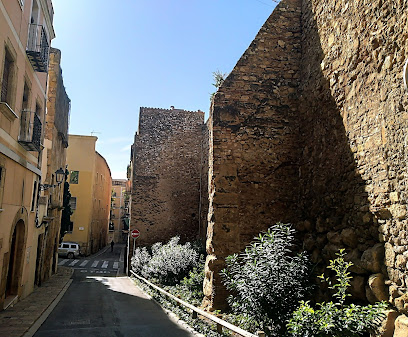
Portal del Roser
Experience the rich Roman heritage at Portal del Roser, a stunning gateway in Tarragona that showcases the city's historical charm and cultural significance.

Monument als herois de 1811
Explore the Monument als Heroes de 1811 in Tarragona, a stunning tribute to bravery set in a serene landscape, perfect for history lovers and travelers alike.

Passeig Arqueològic
Explore the rich history of Tarragona at Passeig Arqueològic, a captivating open-air museum showcasing stunning Roman ruins and ancient architecture.
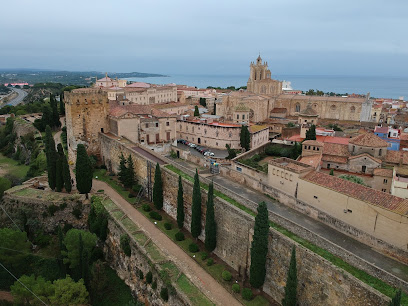
Unmissable attractions to see
PortAventura World
Discover the excitement of PortAventura World, a top amusement park and resort in Tarragona, Spain, perfect for thrill-seekers and families.

Ferrari Land
Experience the thrill of speed and the legacy of Ferrari at Ferrari Land, a must-visit theme park in Vila-seca near Tarragona, Spain.

Amfiteatre de Tarragona
Discover the Amfiteatre de Tarragona, a magnificent Roman amphitheater that showcases ancient history amid stunning Mediterranean views.

Circ Romà
Explore Circ Romà in Tarragona – an ancient Roman amphitheater steeped in history and breathtaking Mediterranean views.

Caribe Aquatic Park
Dive into adventure at Caribe Aquatic Park, a tropical water paradise in Vila-seca, Tarragona, perfect for family fun and unforgettable memories.

San Sebastian beach
Discover the serene beauty and vibrant atmosphere of San Sebastian Beach in Sitges, a perfect Mediterranean escape for sun and surf enthusiasts.

Parc Samà
Explore Parc Samà - A picturesque botanical garden in Cambrils, Tarragona, where nature meets art in a stunning tranquil setting.

Monument to the Castellers
Discover the Monument to the Castellers in Tarragona, a captivating tribute to Catalonia's human tower tradition, rich in history and cultural significance.

Platja de la Pineda
Experience the beauty of Platja de la Pineda, a stunning public beach in Vila-seca, Tarragona, where sun, sea, and fun await every visitor.
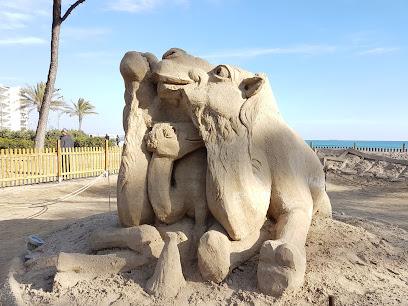
Yelmo Cines Parc Central
Experience the magic of film at Yelmo Cines Parc Central, Tarragona's premier cinema with the latest movies and comfortable viewing.

Sitges Beach
Discover the enchanting Sitges Beach, a vibrant coastal paradise on the Costa Brava known for its golden sands, lively atmosphere, and rich culture.

Gaudí Museum & Tourist Office
Explore the Gaudí Museum & Tourist Office in Reus, a captivating tribute to the famed architect and a gateway to the region's cultural treasures.

Camp de Mart
Explore Camp de Mart: A picturesque park in Tarragona, blending nature, history, and vibrant local culture for an unforgettable experience.

Catedral de Tarragona
Explore the breathtaking Catedral de Tarragona, a stunning blend of history and architecture in the heart of Tarragona, Spain.

Museu del Cau Ferrat
Explore the artistic legacy of Santiago Rusiñol at Museu del Cau Ferrat in Sitges, showcasing Catalan modernisme and folk art treasures.

Essential places to dine
El Pòsit
Experience authentic Mediterranean flavors and fresh seafood at El Pòsit in Tarragona - where dining meets breathtaking coastal views.

EL VERGEL VEGGIE RESTAURANT
Discover the vibrant vegan delights at El Vergel Veggie Restaurant in Tarragona - where fresh flavors meet sustainable dining.

Restaurant El Tiberi - Tarragona
Experience authentic Catalonian cuisine at El Tiberi in Tarragona – where traditional flavors meet modern buffet dining.

Restaurant Casa Balcells
Discover the authentic taste of Mediterranean cuisine at Restaurant Casa Balcells in Tarragona, where every dish is a celebration of Spanish culinary tradition.

La Cuineta
Savor exquisite Mediterranean cuisine at La Cuineta in Tarragona – where every dish tells a story of tradition and flavor.

El Llagut
Experience authentic Mediterranean and Catalonian flavors at El Llagut in Tarragona - a culinary delight for every palate.

Restaurant La Tagliatella
Savor authentic Italian cuisine at Restaurant La Tagliatella in Tarragona - where every dish is a celebration of Mediterranean flavors.

Bocois Tarragona
Savor authentic Spanish cuisine at Bocois Tarragona – where every meal tells a delicious story.

Restaurant Taranta
Experience authentic Mediterranean cuisine at Restaurant Taranta in Tarragona - a perfect blend of flavor and affordability.

El Terrat Restaurant
Experience authentic Mediterranean flavors at El Terrat Restaurant in Tarragona – where every dish tells a story.

Filosofia
Discover authentic Mediterranean flavors at Filosofia in Tarragona - where culinary tradition meets modern elegance.

AQ
Experience exquisite Mediterranean cuisine at AQ in Tarragona - where every dish tells a story of flavor and tradition.

El Taller Restaurant
Discover authentic Catalan flavors at El Taller Restaurant in Tarragona's vibrant Barri del Serrallo.

El Encuentro Asturiano
Discover the heart of Asturias at El Encuentro Asturiano – where authentic flavors meet warm hospitality in Tarragona.

Racó de l'Abat
Experience authentic Catalonian and Mediterranean cuisine at Racó de l'Abat in Tarragona - where tradition meets taste.

Markets, malls and hidden boutiques
Centre Comercial Parc Central
Explore shopping, dining, and entertainment at Tarragona's premier destination, Centre Comercial Parc Central, where variety meets vibrancy.

Les Gavarres
Discover the vibrant shopping experience at Les Gavarres in Tarragona, featuring diverse stores, delightful dining, and entertainment for everyone.

Decathlon Tarragona
Explore Decathlon Tarragona for a wide range of quality sporting goods, from outdoor adventure gear to stylish sportswear, perfect for every enthusiast.

El Corte Inglés
Explore the ultimate shopping experience at El Corte Inglés, Tarragona's premier destination for fashion, electronics, and local culture.
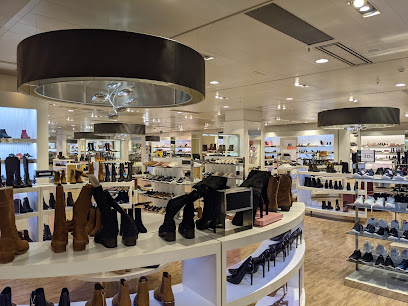
Primark
Shop at Primark Tarragona for trendy, affordable fashion—perfect for tourists seeking style without the splurge.

ZARA
Discover the latest fashion trends at ZARA in Tarragona, where style meets affordability for every fashion enthusiast.

H&M
Explore the latest fashion trends at H&M in Tarragona, offering stylish clothing and accessories for men, women, and children at affordable prices.

Bershka
Discover the latest trends and styles at Bershka in Tarragona, where fashion meets affordability in a lively shopping atmosphere.

Abacus Cooperativa | Tarragona
Explore Abacus Cooperativa in Tarragona, your one-stop shop for gifts, art supplies, children's books, and unique stationery.

Cheapy Shop
Explore Cheapy Shop in Tarragona, your go-to destination for affordable home goods and unique local finds.

Stradivarius
Explore Stradivarius in Tarragona for the latest women's fashion trends and a delightful shopping experience in a vibrant city.

MERKAL CALZADOS
Explore diverse footwear and fashion options at MERKAL CALZADOS in Tarragona, where style meets affordability for the entire family.

Flying Tiger Copenhagen
Explore the vibrant and quirky offerings of Flying Tiger Copenhagen, where unique gifts and home accessories await in Tarragona.

Foot Locker
Discover the latest sneaker trends at Foot Locker in Tarragona, your go-to destination for fashionable footwear and sportswear.

Tedi
Explore Tedi, Tarragona's charming home goods store, offering a vast array of affordable products to enhance your living space and inspire creativity.

Essential bars & hidden hideouts
Bar La Botifarra
Discover the vibrant flavors of Spain at Bar La Botifarra, Tarragona's premier tapas bar, offering a delightful culinary experience in a lively atmosphere.

Pub Highland
Discover the lively nightlife of Tarragona at Pub Highland, where Irish charm meets a vibrant disco atmosphere.

Red Lab
Experience the vibrant cocktail culture at Red Lab, Tarragona's ultimate destination for innovative drinks and lively atmosphere.

Bar Cortijo
Discover the delightful Bar Cortijo in Tarragona, where authentic local cuisine meets a warm and inviting atmosphere, perfect for tourists.

Tarakon
Experience the authentic flavors of Spain at Tarakon, Tarragona's top-rated tapas bar, where every dish tells a story.
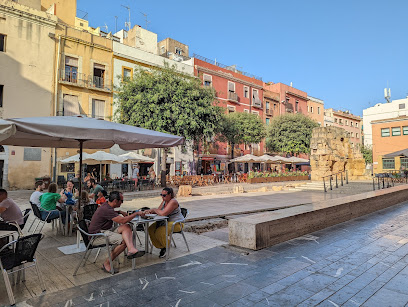
Korxo
Discover the essence of Mediterranean dining at Korxo, Tarragona's top wine bar boasting a cozy atmosphere and exquisite dishes.

Bar Fortuna
Discover the vibrant flavors of Tarragona at Bar Fortuna, the ideal tapas bar for an authentic Spanish culinary experience.

Pachito Lounge - Tarragona
Discover the enchanting Pachito Lounge in Tarragona, where live piano music creates unforgettable nights filled with exquisite cocktails and delightful company.

Déjà - Vu
Experience the vibrant nightlife at Déjà - Vu, Tarragona's favorite pub with a lively atmosphere and diverse drink selection.

Mala Bar
Discover the vibrant atmosphere of Mala Bar in Tarragona, where live music and delightful cocktails create an unforgettable nightlife experience.

Alquimista Tgn
Experience Tarragona's nightlife at Alquimista Tgn, a lively cocktail bar with exquisite drinks, dancing, and live music in a vibrant atmosphere.

ANTIQUE
Discover Antique, Tarragona's lively cocktail bar, where expertly crafted drinks meet a vibrant nightlife atmosphere.

Bar Dorado
Experience the vibrant flavors of Tarragona at Bar Dorado, a cozy bar offering delicious tapas and a welcoming atmosphere.
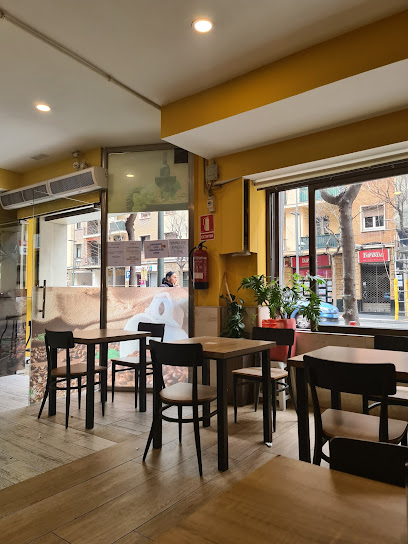
Negresco
Discover the local charm and vibrant nightlife at Negresco, Tarragona's favorite budget-friendly bar for tourists and locals alike.
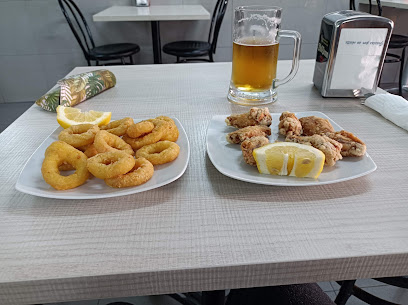
Bar Queen's
Discover Tarragona's vibrant nightlife at Bar Queen's, where local culture meets refreshing drinks in a lively atmosphere.

Travel experiences inspired by this city
Explore more travel diariesLocal Phrases
-
- HelloHola
[oh-lah] - GoodbyeAdiós
[ah-dee-ohs] - YesSí
[see] - NoNo
[noh] - Please/You're welcomePor favor/De nada
[por fah-vor/de nah-dah] - Thank youGracias
[grah-thyahs] - Excuse me/SorryPerdón/Lo siento
[pair-dohn/loh syen-toh] - How are you?¿Cómo estás?
[koh-moh ehs-tahs] - Fine. And you?Bien. ¿Y tú?
[byen. ee too] - Do you speak English?¿Hablas inglés?
[ah-blahs een-glehs] - I don't understandNo entiendo
[noh ehn-tyen-doh]
- HelloHola
-
- I'd like to see the menu, pleaseMe gustaría ver la carta, por favor
[meh goo-stah-ree-ah behr lah kahr-tah, por fah-vor] - I don't eat meatNo como carne
[noh koh-moh kahr-neh] - Cheers!¡Salud!
[sah-loohd] - I would like to pay, pleaseMe gustaría pagar, por favor
[meh goo-stah-ree-ah pah-gahr, por fah-vor]
- I'd like to see the menu, pleaseMe gustaría ver la carta, por favor
-
- Help!¡Ayuda!
[ah-yoo-dah] - Go away!¡Vete!
[veh-teh] - Call the Police!¡Llama a la Policía!
[yah-mah ah lah poh-lee-thee-ah] - Call a doctor!¡Llama a un médico!
[yah-mah ah oon meh-dee-koh] - I'm lostEstoy perdido
[ehs-toy pair-dee-doh] - I'm illEstoy enfermo
[ehs-toy ehn-fehr-moh]
- Help!¡Ayuda!
-
- I'd like to buy...Me gustaría comprar...
[meh goo-stah-ree-ah kohm-prahr] - I'm just lookingEstoy mirando
[ehs-toy meer-ahn-doh] - How much is it?¿Cuánto cuesta?
[kwan-toh kwehs-tah] - That's too expensiveEsto es demasiado caro
[ehs-toh ehs deh-mah-syah-doh kah-roh] - Can you lower the price?¿Puede rebajar el precio?
[pweh-deh reh-bah-hahr ehl pree-syoh]
- I'd like to buy...Me gustaría comprar...
-
- What time is it?¿Qué hora es?
[keh oh-rah ehs] - It's one o'clockEs la una
[ehs lah oo-nah] - Half past (10)Es la diez y media
[ehs lah dyehth ee meh-dyah] - MorningMañana
[mah-nyah-nah] - AfternoonTarde
[tahr-deh] - EveningNoche
[noh-cheh] - YesterdayAyer
[ah-yehr] - TodayHoy
[oy] - TomorrowMañana
[mah-nyah-nah] - 1Uno
[oo-noh] - 2Dos
[dohs] - 3Tres
[trehs] - 4Cuatro
[kwah-troh] - 5Cinco
[theen-koh] - 6Seis
[says] - 7Siete
[syeh-teh] - 8Ocho
[oh-choh] - 9Nueve
[nweh-veh] - 10Diez
[dyehth]
- What time is it?¿Qué hora es?
-
- Where's a/the...?¿Dónde está...?
[dohn-deh ehs-tah] - What's the address?¿Cuál es la dirección?
[kwahl ehs lah dee-rehk-syon] - Can you show me (on the map)?¿Puedes mostrarme (en el mapa)?
[pweh-dehs mohs-trar-meh (ehn ehl mah-pah)] - When's the next (bus)?¿Cuándo es el próximo (autobús)?
[kwan-doh ehs ehl proh-ksee-moh (ow-toh-boos)] - A ticket (to ....)Un billete (a ....)
[oon bee-yeh-teh (ah ...)]
- Where's a/the...?¿Dónde está...?
History of Tarragona
-
Founded in the 3rd century BCE, Tarraco was the capital of the Roman province of Hispania Citerior. The city flourished under Roman rule, becoming a major administrative and commercial hub. The remains of the Roman Circus, Amphitheatre, and the impressive Aqueduct of Les Ferreres, also known as the Devil's Bridge, attest to its historical significance.
-
Following the decline of the Roman Empire, Tarraco was captured by the Visigoths in the 5th century CE. It became an important Visigothic settlement, and traces of this period can still be seen in the city's architecture and archaeological findings.
-
In the 8th century, Tarragona fell to the Moors, who ruled the area for several centuries. The Moorish influence is evident in the city's layout and some architectural elements, although much of this period's physical heritage has been lost.
-
By the 12th century, Tarragona was reconquered by the Christians during the Reconquista. It became an important religious center, marked by the construction of the Tarragona Cathedral, a stunning example of Gothic architecture that began in 1171.
-
During the Middle Ages, Tarragona experienced economic and cultural growth. The city's strategic location made it a key trading port, attracting merchants and artisans. The medieval walls and structures, including the Archbishop's Palace, reflect this period of prosperity.
-
In the early 18th century, Tarragona played a significant role during the War of Spanish Succession. The city's fortifications were strengthened, and it became a key military outpost. The Battle of Tarragona in 1811 was a crucial event, leading to extensive damage but also to the city's eventual liberation.
-
The 19th and 20th centuries saw Tarragona undergoing significant modernization. The introduction of the railway, the expansion of the port, and the development of industry transformed the city into a dynamic urban center. The modernist architecture from this era adds a unique charm to the city's historical landscape.
-
Tarragona's rich history has been recognized by UNESCO, which declared the Archaeological Ensemble of Tarraco a World Heritage Site in 2000. This recognition highlights the city's importance as a cultural and historical treasure, preserving its legacy for future generations.
Tarragona Essentials
-
Tarragona is well-connected and easily accessible. The nearest international airport is Barcelona-El Prat Airport, located about 82 kilometers away. From the airport, you can take a direct train or bus to Tarragona, which takes approximately 1-1.5 hours. Alternatively, you can rent a car and drive along the AP-7 or C-32 highways. Tarragona also has a train station with connections to major Spanish cities, including high-speed AVE trains from Madrid and Barcelona.
-
Tarragona has a comprehensive public transportation system that includes buses and taxis. The local bus service, operated by EMT, covers most parts of the city and nearby areas. Tickets can be purchased on the bus or at designated kiosks. Taxis are readily available and can be hailed on the street or booked via phone. For exploring the historical center, walking is the best option as many attractions are within close proximity. Renting a bicycle is also a popular way to get around, with several rental shops available.
-
The official currency in Spain is the Euro (EUR). Credit and debit cards are widely accepted in most hotels, restaurants, and shops. However, it's advisable to carry some cash for small purchases and in case you visit smaller establishments that may not accept cards. ATMs are plentiful throughout Tarragona, and you can withdraw cash using international cards. Currency exchange services are available at banks and exchange bureaus.
-
Tarragona is generally safe for tourists, but standard precautions should be taken. Petty crimes, such as pickpocketing, can occur in crowded areas and popular tourist spots. Be particularly vigilant in the Old Town and around the Roman ruins. Avoid walking alone in poorly lit areas at night. The neighborhoods of Campclar and Torreforta have higher crime rates, so it's best to stay cautious if visiting these areas.
-
In case of emergency, dial 112 for immediate assistance. This number connects you to police, fire, and medical services. Tarragona has several hospitals and clinics that provide emergency medical care. It is recommended to have travel insurance that covers health emergencies. For minor health issues, pharmacies (farmacias) are available throughout the city and can provide over-the-counter medications.
-
Fashion: Do dress comfortably but stylishly. In summer, lightweight clothing is recommended, but avoid overly revealing outfits when visiting religious sites. Religion: Do respect local customs, especially in churches. Cover your shoulders and knees when entering religious buildings. Public Transport: Do validate your ticket when boarding buses. Don't eat or drink on public transport. Greetings: Do greet people with a polite 'Hola' or 'Buenos días.' A handshake is common when meeting someone for the first time. Eating & Drinking: Do try local dishes like 'calçots' and 'fideuà.' Don’t start eating until everyone at the table has been served.
-
To experience Tarragona like a local, visit the Mercat Central de Tarragona, where you can find fresh produce and local delicacies. Attend local festivals such as the Castells (human towers) and Santa Tecla Festival to immerse yourself in the culture. Take a leisurely stroll along Rambla Nova, a popular spot for locals to relax and socialize. Don't miss out on trying 'vermut,' a local aperitif, at one of the many bars in the city.
Trending Landmark in Tarragona
-
Mediterranean Balcony
-
Amfiteatre de Tarragona
-
Circ Romà
-
The Ferreres Aqueduct
-
Monument to the Castellers
-
Colonial forum of Tàrraco
-
Roman theatre of Tàrraco
-
Font del Centenari
-
Parc de la Ciutat
-
St. Anthony Gate
-
National Archaeological Museum of Tarragona
-
Muralla Romana de Tarragona
-
Portal del Roser
-
Monument als herois de 1811
-
Passeig Arqueològic
Nearby Cities to Tarragona
-
Things To Do in Lleida
-
Things To Do in Barcelona
-
Things To Do in Andorra la Vella
-
Things To Do in Escaldes-Engordany
-
Things To Do in Encamp
-
Things To Do in La Massana
-
Things To Do in Girona
-
Things To Do in Arinsal
-
Things To Do in Pas de la Casa
-
Things To Do in Canillo
-
Things To Do in Soldeu
-
Things To Do in Ordino
-
Things To Do in El Serrat
-
Things To Do in Huesca
-
Things To Do in Zaragoza


















